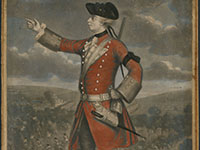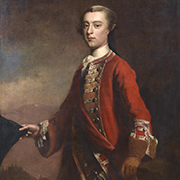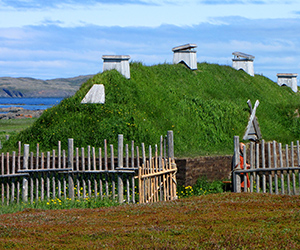CANADA HISTORY - War
7 Years War
The long and arduous inter-colonial struggle between Britain and France had, by the mid-18th century, delivered far less success for Britain in North America than might have been expected given the balance of power. The British colonies, with their burgeoning population that outnumbered the French twelve to one, seemed on paper to have every advantage. Yet, the reality on the ground was starkly different. The fourteen British colonies, stretching along the Atlantic seaboard, were a patchwork of disunited territories, each more focused on local interests than collective defense. These colonies, with their fiercely independent legislatures and competing economic priorities, were fundamentally ill-organized for war. In contrast, New France, though far smaller in population and resources, was highly centralized. The French colonial administration operated with a singularity of purpose, where military and political decisions could be made swiftly and effectively. This tight organization, along with strategic alliances with Indigenous nations, allowed the French to punch far above their weight on the battlefield.
The Treaty of Utrecht in 1713, which ended the War of the Spanish Succession, had transferred Nova Scotia (Acadia) from French to British hands. However, despite this gain, Britain had made little progress in unseating the French presence along the St. Lawrence River—the heart of New France. The French foothold in North America remained strong, buttressed by their control of Louisbourg on Cape Breton Island, guarding the entrance to the St. Lawrence, and a series of inland forts that formed a vast defensive network. As tensions mounted, the scope of the conflict expanded beyond localized skirmishes, and the Ohio Valley emerged as a critical battleground. Both empires saw this region, along with the Mississippi Valley, as key to controlling the interior of the continent.
For the British colonies, the stakes could not have been higher. The French, with their long chain of military outposts stretching from Canada to Louisiana, threatened to hem in the British colonies, effectively containing them between the Allegheny Mountains and the Atlantic coast. If the French succeeded in securing this line, the British colonists would be cut off from the westward expansion that they viewed as vital to their future. The possibility of being fenced in by a French-controlled interior was a chilling prospect for the colonies, whose populations were rapidly growing and whose economies increasingly depended on access to new lands and resources.
The very first shots of what would become the Seven Years' War were fired in 1754 in the Ohio Valley, where French and British ambitions collided. In what was initially a local conflict, a young Colonel George Washington—then serving under the orders of the governor of Virginia—was sent to deliver a message to the French, demanding that they withdraw from the territory. Washington's encounter with the French at Fort Duquesne escalated quickly. He attacked a French patrol near Jumonville Glen, but the small skirmish ended disastrously for the British. Washington’s men were soon outnumbered and outgunned, and after a brief resistance at Fort Necessity, he was forced to surrender to the French. This defeat, though minor in military terms, marked the opening of a much larger conflict between the two great powers, drawing both Europe and America into a global struggle for supremacy.
In response to this failure, the British government, recognizing the need for direct intervention, dispatched Major-General Edward Braddock to America in 1755 as Commander-in-Chief of British forces in the colonies. Braddock, a seasoned officer in European warfare, brought with him two regular infantry battalions and set out to drive the French from their western strongholds, starting with Fort Duquesne, a key French position at the confluence of the Allegheny and Monongahela rivers (modern-day Pittsburgh). Braddock’s expedition was a massive undertaking, but it quickly fell apart. The dense forests and rough terrain of the American frontier were entirely different from the battlefields of Europe, and Braddock’s rigid adherence to European military tactics proved disastrous. As his column advanced toward Fort Duquesne, they were ambushed by a smaller force of French soldiers and their Indigenous allies. The resulting battle was a humiliating defeat for the British. Braddock himself was mortally wounded, and his army was forced to retreat in disarray, suffering heavy casualties.
Braddock’s defeat shocked the British colonies and exposed the inadequacies of their military efforts in North America. It underscored the French and their Indigenous allies’ mastery of guerrilla warfare, which was perfectly suited to the thick forests and rugged terrain. In the two years that followed, the British suffered a series of reversals that seemed to confirm their lack of coordination and strategic coherence. In 1755, shortly after Braddock's defeat, the French commander Baron Ludwig August Dieskau led a force southward along Lake Champlain in an attempt to capture British positions near Lake George. Although Dieskau was defeated and captured by British colonial militia at the Battle of Lake George, this victory did little to reverse the overall course of the war.
In 1756, the war escalated further with the arrival of Louis-Joseph de Montcalm, an experienced French general dispatched from Europe to take command of French forces in North America. Montcalm, a man of considerable talent, immediately set out to strengthen the French position and restore their momentum. His first target was Fort Oswego, the only British post on the Great Lakes and a crucial link in their defense of the interior. Montcalm’s assault was swift and decisive. In August 1756, he captured Oswego, cutting off British access to the lakes and dealing a severe blow to their hopes of contesting French control in the region. Montcalm’s victory at Oswego emboldened the French, and in the following year, he turned his attention to Fort William Henry, a key British stronghold on the southern shore of Lake George. In 1757, Montcalm laid siege to the fort, and after a protracted defense, the British were forced to surrender. Montcalm’s capture of Fort William Henry marked a high point in the French campaign and effectively stifled any British plans for an advance on Montreal that year.
On the British side, leadership was plagued by indecision and poor coordination. Lord Loudoun, who succeeded Braddock as the British commander-in-chief, proved ineffective at galvanizing the colonies or marshaling the necessary naval and military forces to make significant headway. Loudoun’s reluctance to launch an assault on Louisbourg, the massive French fortress on Cape Breton Island, reflected his fears that the British navy was not strong enough to challenge the French fleet stationed there. Louisbourg, with its towering walls and strategic position guarding the mouth of the St. Lawrence, remained a formidable obstacle to any British attempt to strike at the heart of New France. Loudoun’s caution proved costly, as it allowed the French to maintain their control over the vital maritime routes into the St. Lawrence, securing their ability to resupply and reinforce Quebec.
The early stages of the war, therefore, were marked by a series of British failures that belied their overwhelming numerical superiority. Despite outnumbering the French significantly, the British colonies were politically fragmented, militarily uncoordinated, and often reluctant to contribute to a unified war effort. In contrast, the French, despite their smaller population, were able to leverage their centralized control, strong alliances with Indigenous nations, and strategic use of fortified positions to maintain the upper hand. It was only after the intervention of William Pitt in 1757, and the subsequent shift in British strategy, that the tide of war would begin to turn in favor of the British
















